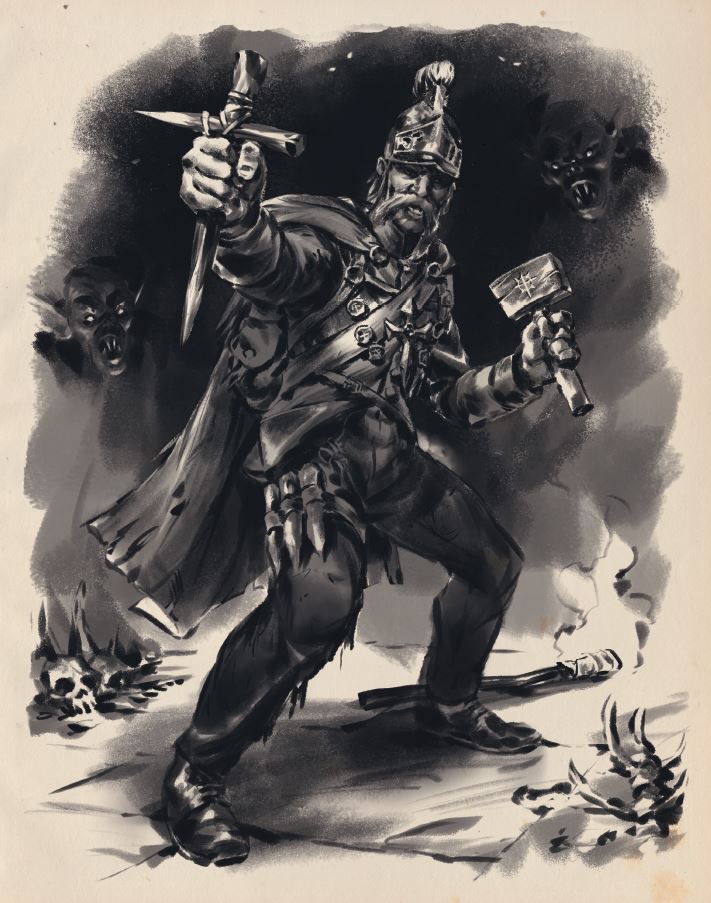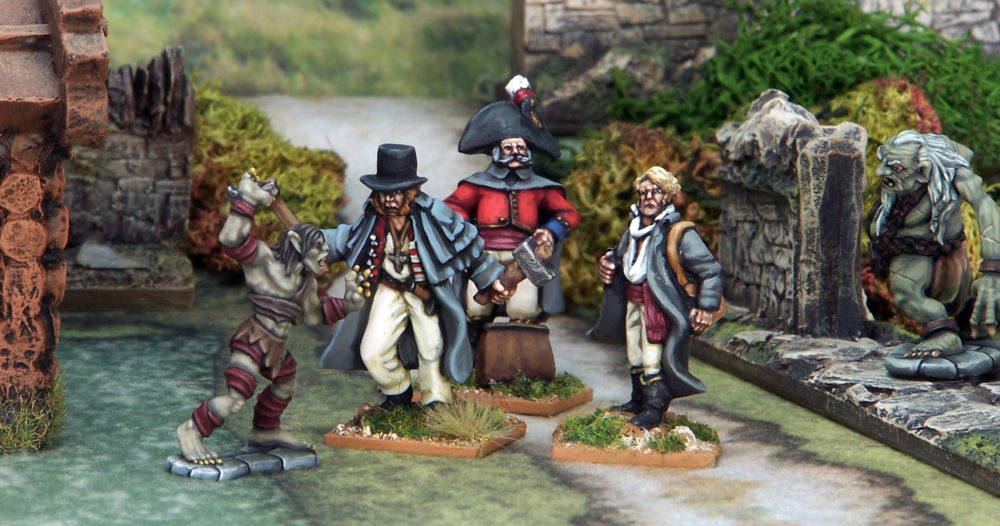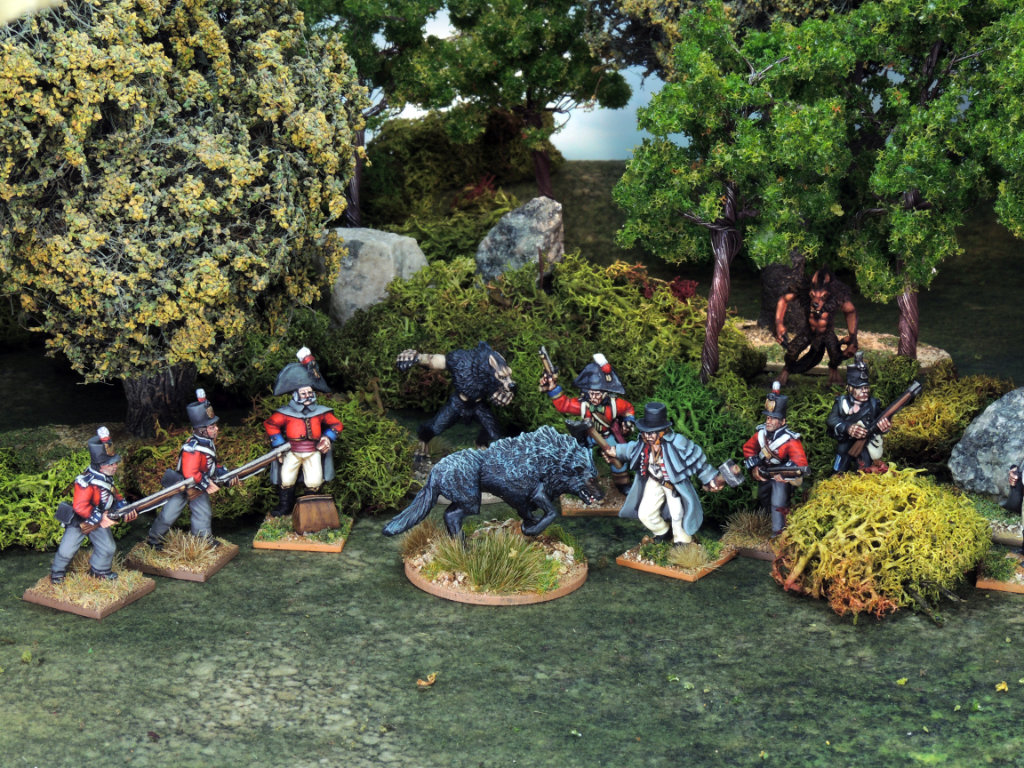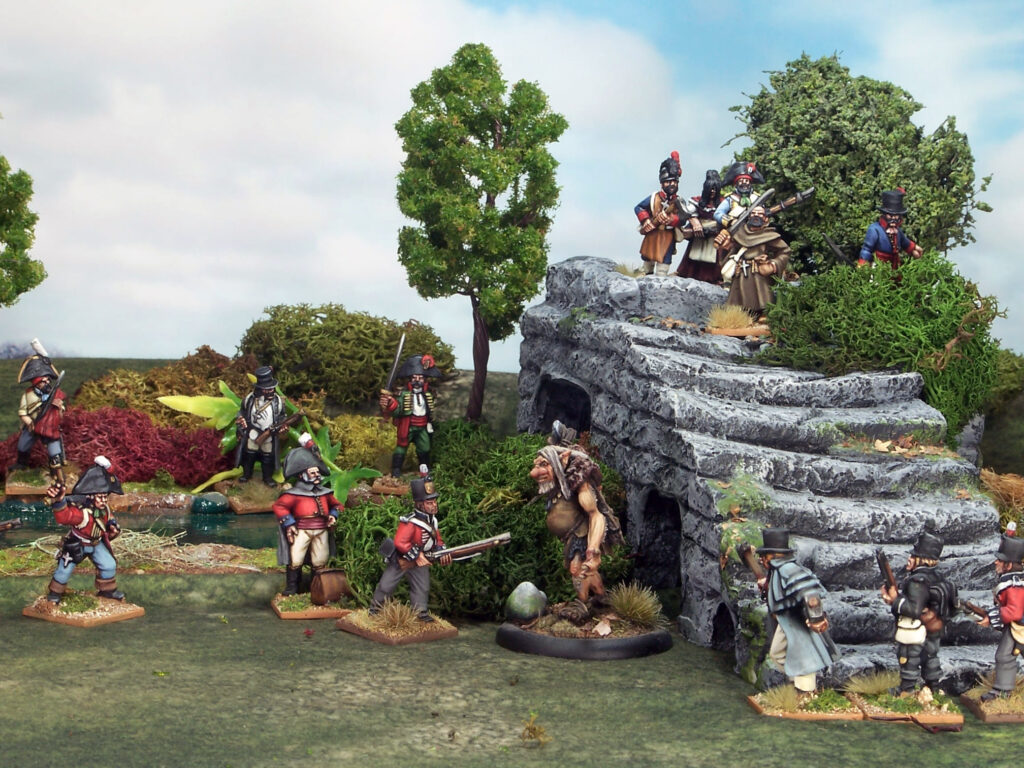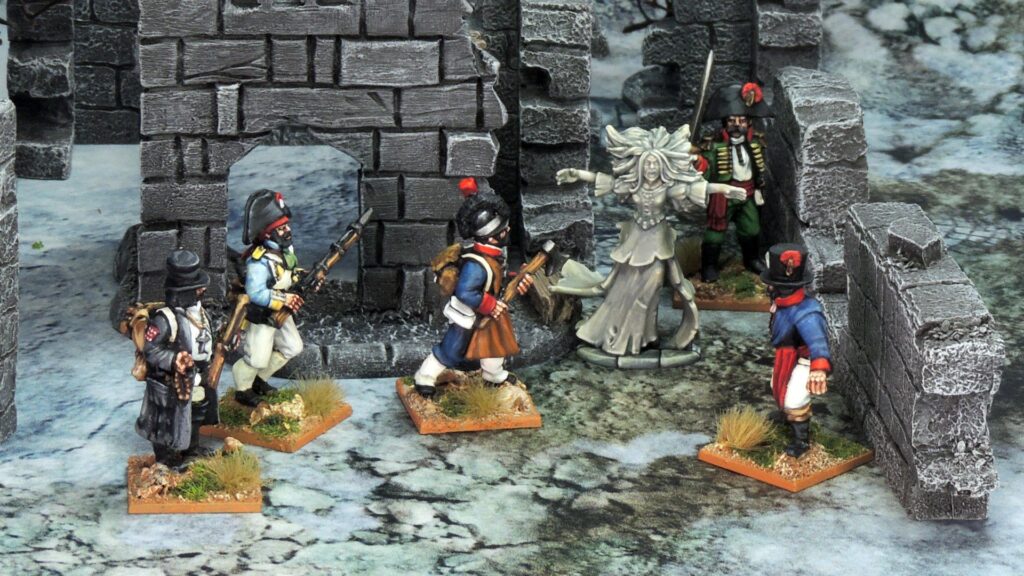This excellent skirmish game is a great way to bridge the gap between historical and fantasy games. Let’s take a look at what makes it so fun and accessible.
Joseph McCullough has been very busy churning out excellent games and supplements for nearly a decade now. You may have heard of Frostgrave, a spiritual successor to Mordheim, or it’s sci-fi twin Stargrave. The Silver Bayonet: A Wargame of Napoleonic Gothic Horror combines elements of history and fantasy with the fast play skirmish mechanics Joe has been honing over the years, and it is a blast.
Players build small warbands based on the biggest Napoleonic factions: France, England, Spain, Austria, Prussia and Russia. Every warband is lead by an officer that can be customized and will contain a number of soldiers, but it will also likely contain specialists such as the Occultist, Champion of Faith, or Supernatural Investigator. Every unit in the game brings something unique to the warband, whether it is a special weapon, skill or knowledge of the enemy, and they can be further customized to carry extra weapons, holy (or unholy!) artifacts and special ammunition for special situations.
Once your warband is created you are ready to dive into any number of prebuilt scenarios where your soldiers will scour the countryside battling monsters, outlaws, and other warbands. Monsters in Silver Bayonet are not player controlled, but rather have a rudimentary script for how they behave. This means that games can be played solo, co-op, head to head, or with one player controlling a warband and another playing as a sort of GM controlling the game and monsters.
Speaking of monsters, they come in all shapes and sizes, but they tend to be extremely dangerous, annoying, or both. There are zombies, wolves, vampires, goblins, trolls, demons, witches and a host of others, all with their own special attacks and immunities. Your soldiers get experience for killing them (and opposing soldiers) but they also risk suffering lingering injuries or mental breakdowns as campaigns progress. And the game is very much meant to be played as a campaign, tracking your warband’s progress over many scenarios.
Combat is fast and deadly in SB. When attacking a players rolls 2D10 of different colors. Red and blue is normal, but any two colors will suffice. Before rolling your attack dice, it must be determined which die is the “Power” die and which is the “Finesse” die, and whether the model is using a power or finesse based attack. This will determine damage if your combined roll equals or beats the target’s defense value. So Let’s say my British Rifleman is trying to shoot an Austrian Infantryman. The Austrian’s defense is 13 and my Rifleman is a crack shot, getting +2 to shooting rolls. Rifles are finesse weapons, so when I roll my two dice and score a combined fifteen, I look at the finesse die to see how much damage I did.
This brings us to another interesting mechanic: rerolls. Warbands always start with a very limited number of rerolls, and they are broken up into three categories: power, finesse and monster (more on monster dice shortly). Rerolls can only be used on die rolls of their type. In the example above let’s say I rolled a 7 on the power die and a 6 on the finesse die. With my +2 accuracy I hit the target and do 6 damage with my finesse weapon. I could use a reroll to try and increase the damage, but I am unlikely to roll better than 6. But let’s say I rolled a 9 on the finesse die and a 1 on the power die, missing the target on a combined score of 12. I could use a power die reroll here to almost certainly roll better than a 1, hitting the target and keeping my finesse score, dealing 9 damage.
Now let’s take a quick look at Monster Dice. Rather than being straight rerolls, Monster Dice allow you to influence the behavior of monsters on the tabletop. A player can spend a monster die to change a monster’s target to any other valid target, or to have them perform any other valid action on their script. Furthermore, a monster die can be used to reroll one of a monster’s attach dice, but only in order to increase the result. This is especially useful when monsters are attacking your opponent.
The Silver Bayonet rulebook comes with all the rules needed to play, create warbands, and scenarios for two campaigns, one solo and one head to head. A new campaign book was just released, The Carpathians, with another on the way, set in Egypt (yes, Napoleon went to Egypt). It’s a great time to get into the game, you won’t regret it!


